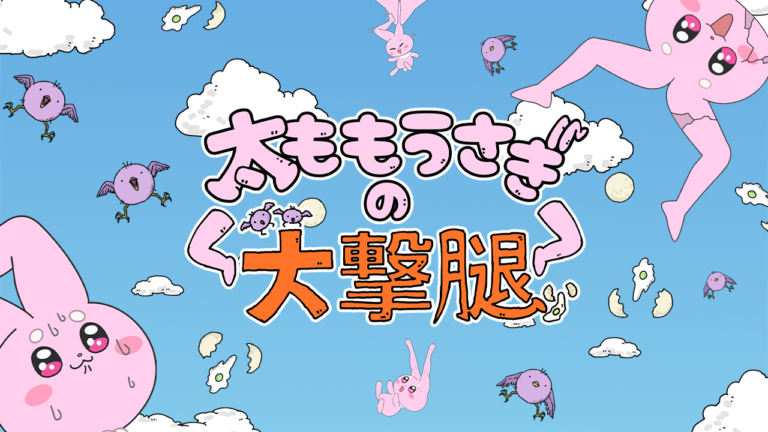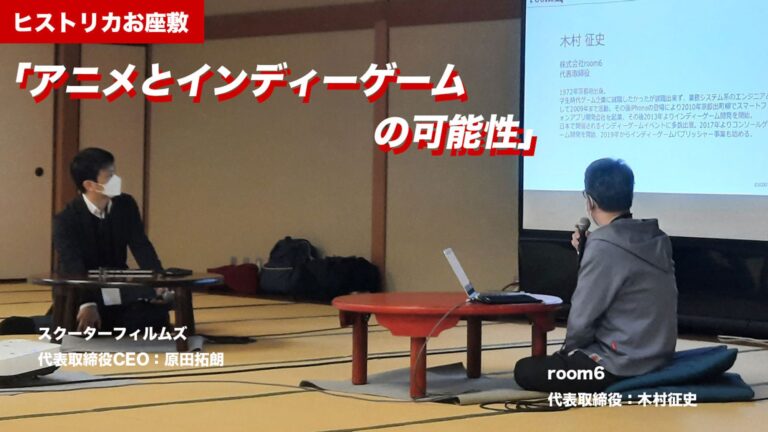Hello, my name is Lee Hana. I usually work at a Japanese animation studio while also engaging with the industry through indie game development and participating in events.
As a result, I have had many opportunities to experience the indie game scene in Japan, gaining various experiences in development and exhibitions. However, strangely enough, I realized that I had no connection to indie game events in my home country, South Korea.
In this context, I heard that the indie game platform “STOVE” and its parent company “SmileGate” are hosting a large-scale indie game event “Burning Beaver 2024” in Seoul, and I immediately decided to cover it.
Unlike other game events, it is being held at DDP (Dongdaemun Design Plaza) in the heart of Seoul, which I thought would be a great opportunity to feel the current state of the indie game scene in Korea.
This time, I would like to share some impressive works I encountered at the event held from November 29 to 31, along with the characteristics of the Korean indie game scene behind them.
A Venue with a Street Stall Atmosphere
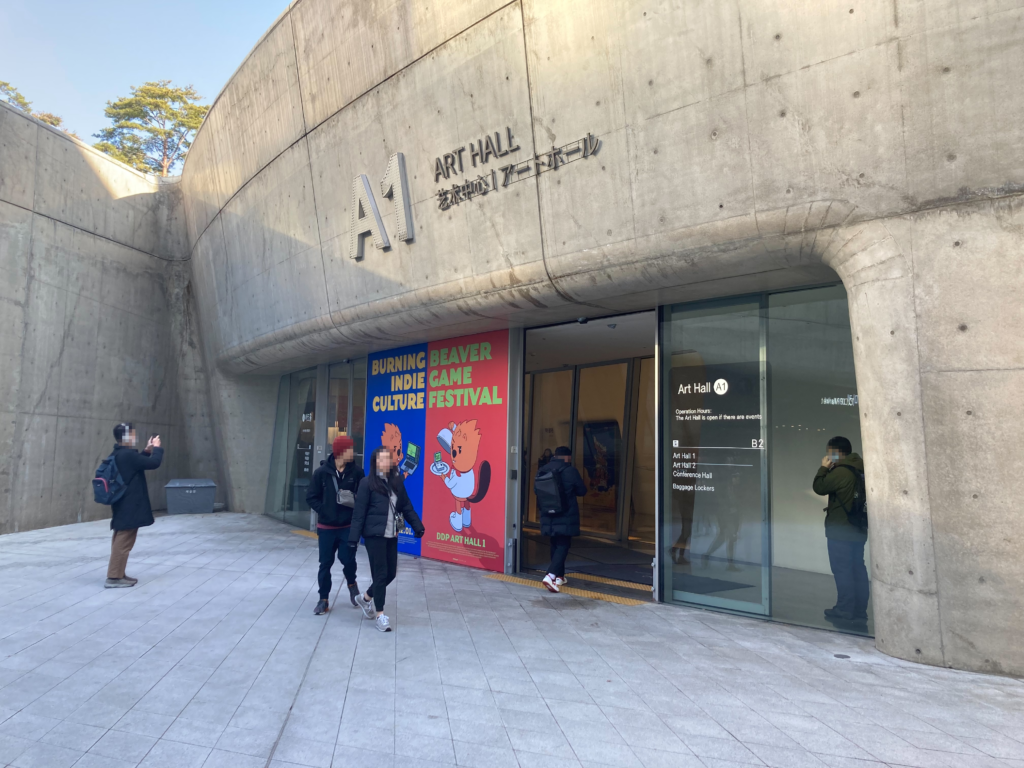
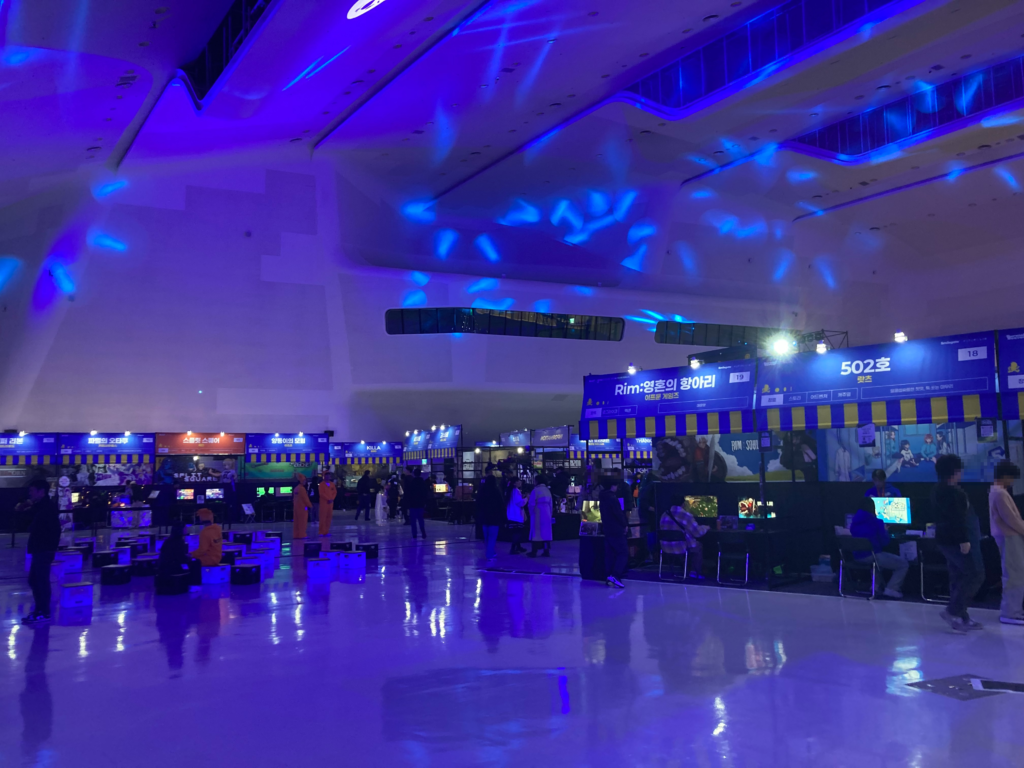
Upon stepping into the art hall at DDP, I was greeted by a stadium-like openness. The high ceiling and spacious area featured 83 booths arranged neatly, with ample walkways between them.
This year’s Burning Beaver has adopted the theme of “Cooking and Chefs,” and each booth was designed to resemble a street stall. Signs displaying each title hung above the booths, creating an atmosphere reminiscent of street stall roofs. The booth spaces, separated by metal frames, were transparent at the top and sides, making them feel spacious and not cramped.
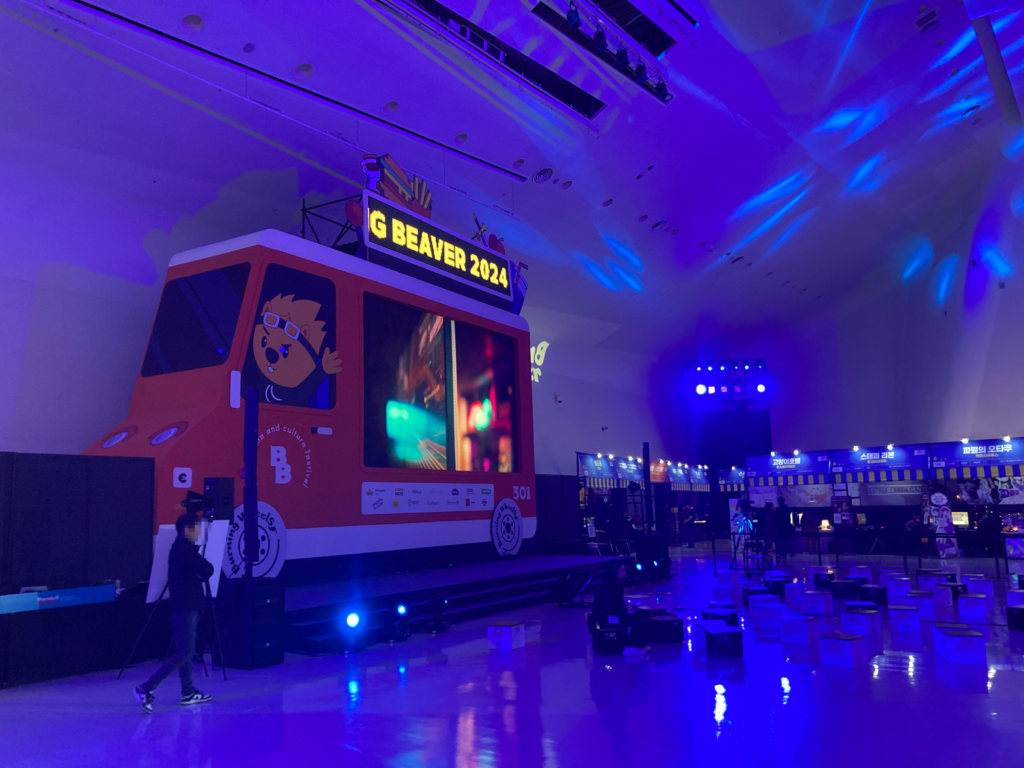
Events were held here.
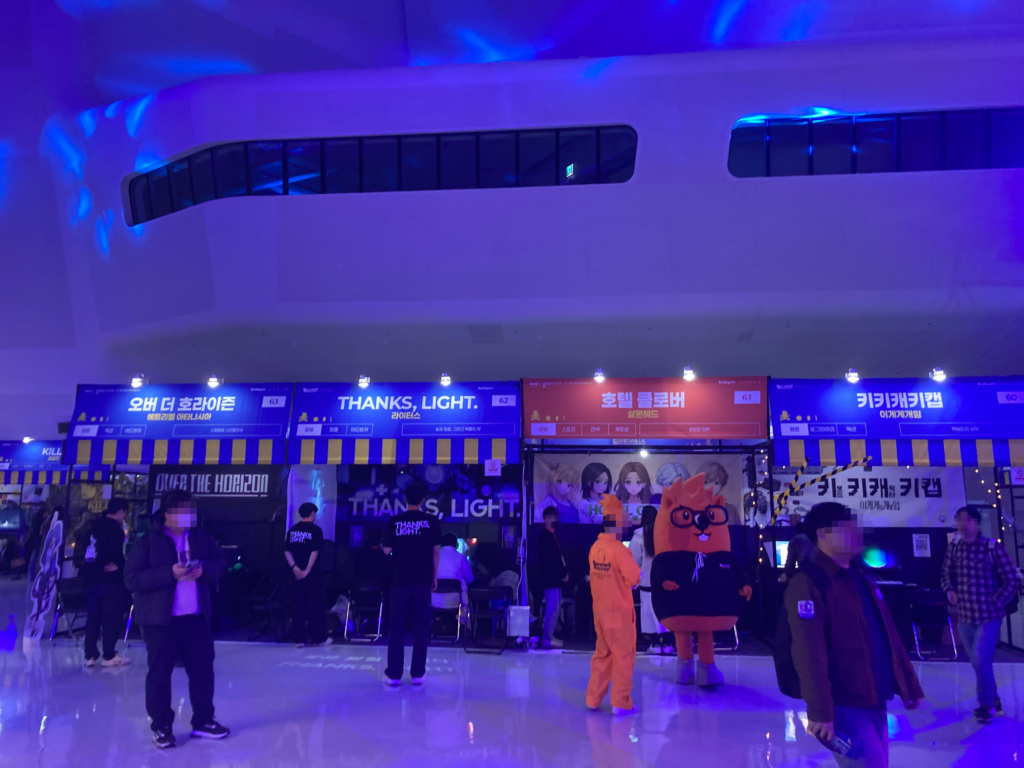
in line with the theme.
While the theme was unified, the decoration of the booths was left to each exhibitor, resulting in a coexistence of individuality within the overall cohesion, giving the venue a unique charm.
On the 29th, the day I visited, being a weekday, the atmosphere was relatively relaxed in the morning. I observed young gamers in their teens and twenties carefully exploring each booth and experiencing the games. Despite the lively design reminiscent of a street market, the actual venue was enveloped in a calm atmosphere, which I found to be an interesting contrast.
Exploring New Possibilities in Gaming
Within the venue, there was a unique exhibition space titled “Games Outside of Games”, which differed from typical game displays. Here, works such as ‘IMAGE ALCHAEOLOGY’ and ‘BARC’ were showcased, engaging in ambitious attempts based on the fundamental question of “What constitutes a video game?” Moving away from traditional controller or keyboard inputs, experimental works blurred the lines between reality and gaming by incorporating physical devices, photography, and analysis, suggesting new possibilities for games.
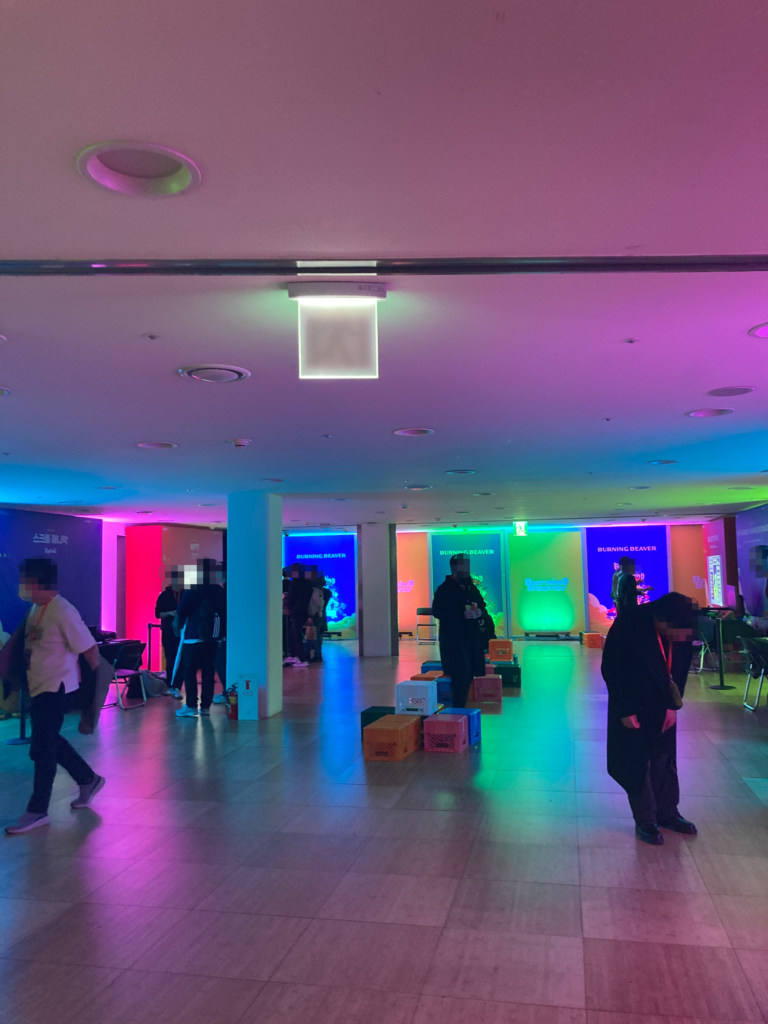
“Games Outside of Games.”
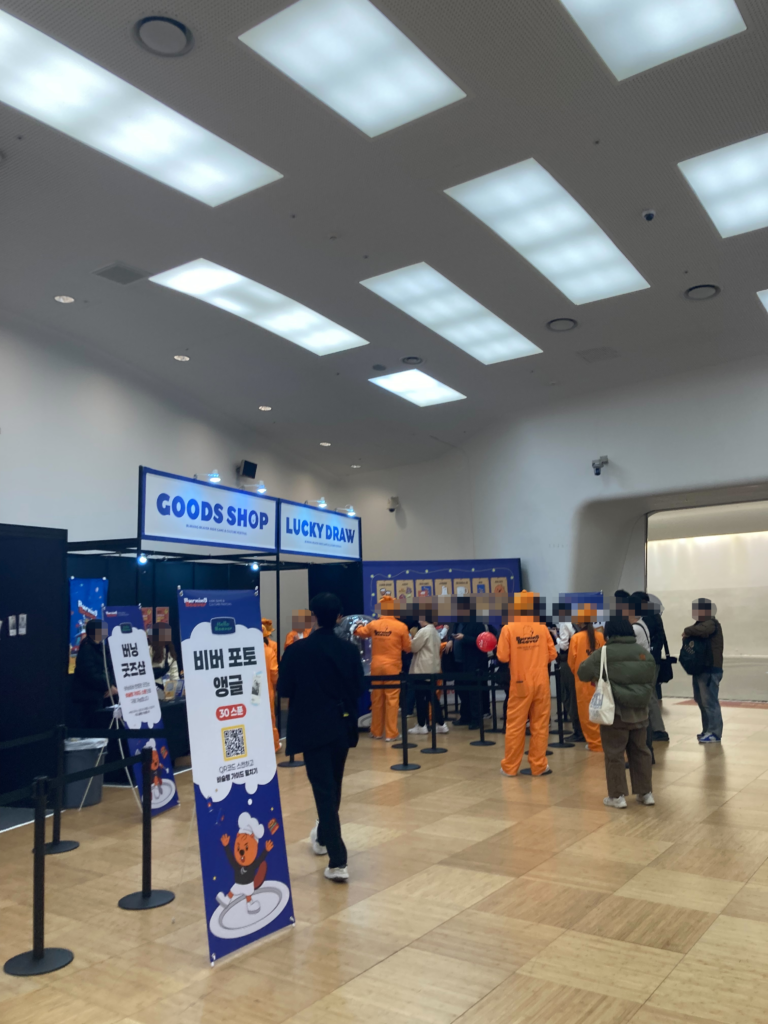
points earned through gameplay could be used.
Additionally, near the exit of the venue, there was a space where points called “spoons” could be utilized. By experiencing games at each booth, visitors could earn points through QR codes, which could then be used to participate in events like merchandise lotteries or fortune-telling. This system was a fascinating way to encourage active participation from attendees.
Now, I would like to introduce some impressive works I encountered in this unique space, one by one.
A 30-Day Story Woven in a 16-Color World—『Time To Live』
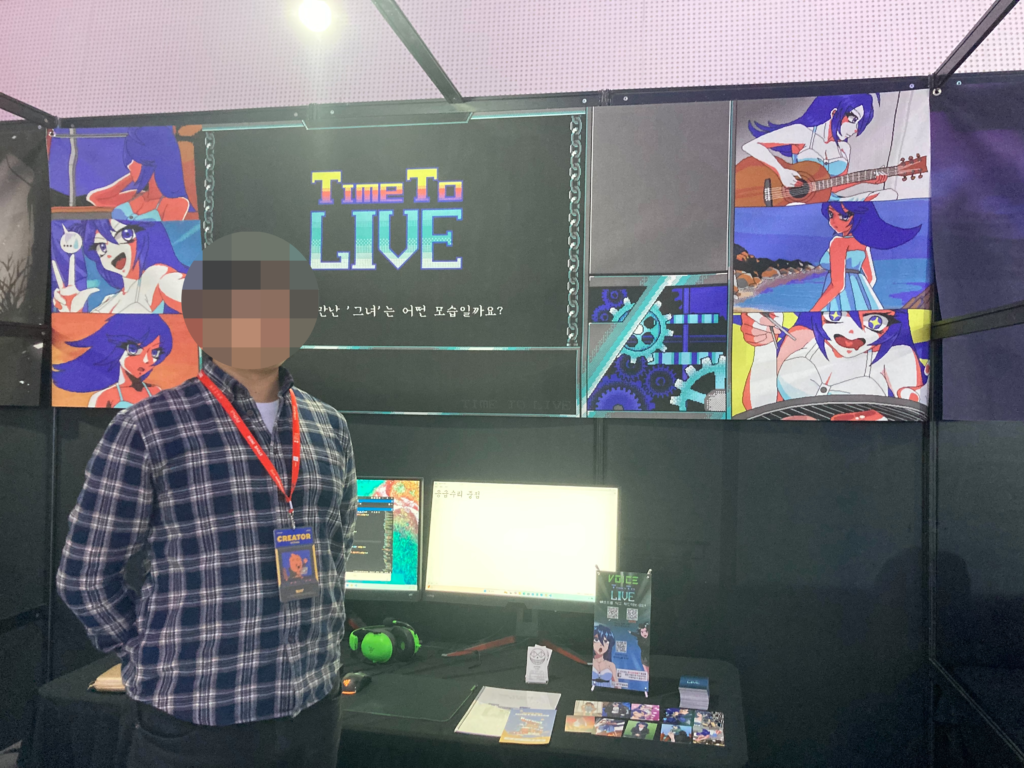
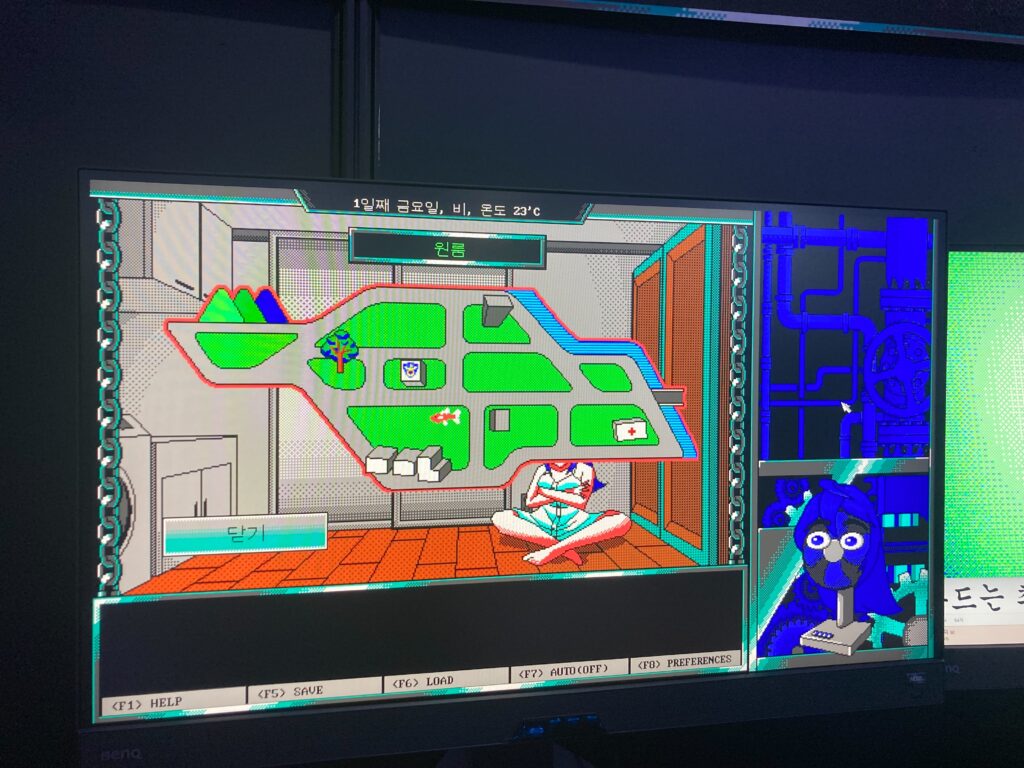
truly retro stands out.
The first thing that caught my eye upon entering the venue was the vibrant 16-color graphics of 『Time To Live』, displayed at booth number 2. Developed by solo creator WTFMAN, this work exuded a presence reminiscent of classic masterpieces, standing out the most in the venue.
From UI design to mini-games, nostalgic elements were sprinkled throughout, evoking a sense of wonder, “In this day and age, how did they create such a game?” This game, currently in development for Steam, has a demo version available.
A Unique Worldview and Gameplay
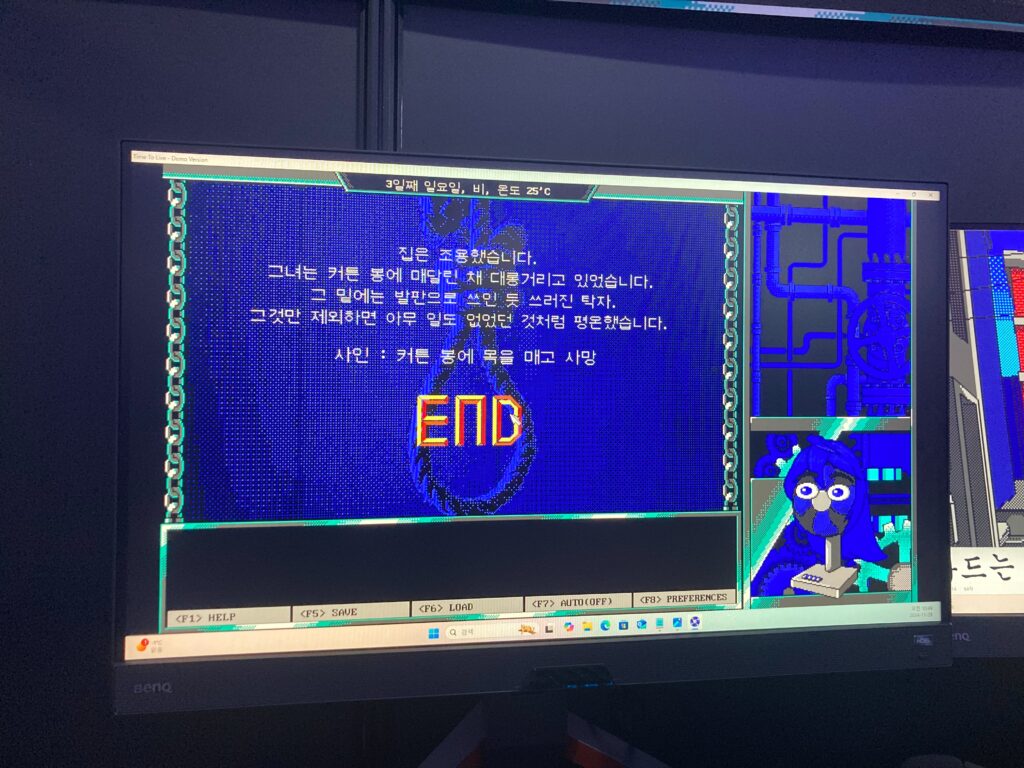
The display of the cause of death and the illustration of the rope in the background are vivid and frightening.
Not only the visuals but also the game’s concept was very impressive. The story revolves around saving a girl who wishes to commit suicide on a rooftop one day and spending the next 30 days together. Players must manage her stress, which often leads her to attempt to end her life, all within a limited budget.
There are育成 elements, such as giving her books to enhance her intelligence, but it is by no means an easy task. I played on the second of four difficulty levels and quickly found myself facing a game over.
A Book Filled with the Developer’s Thoughts
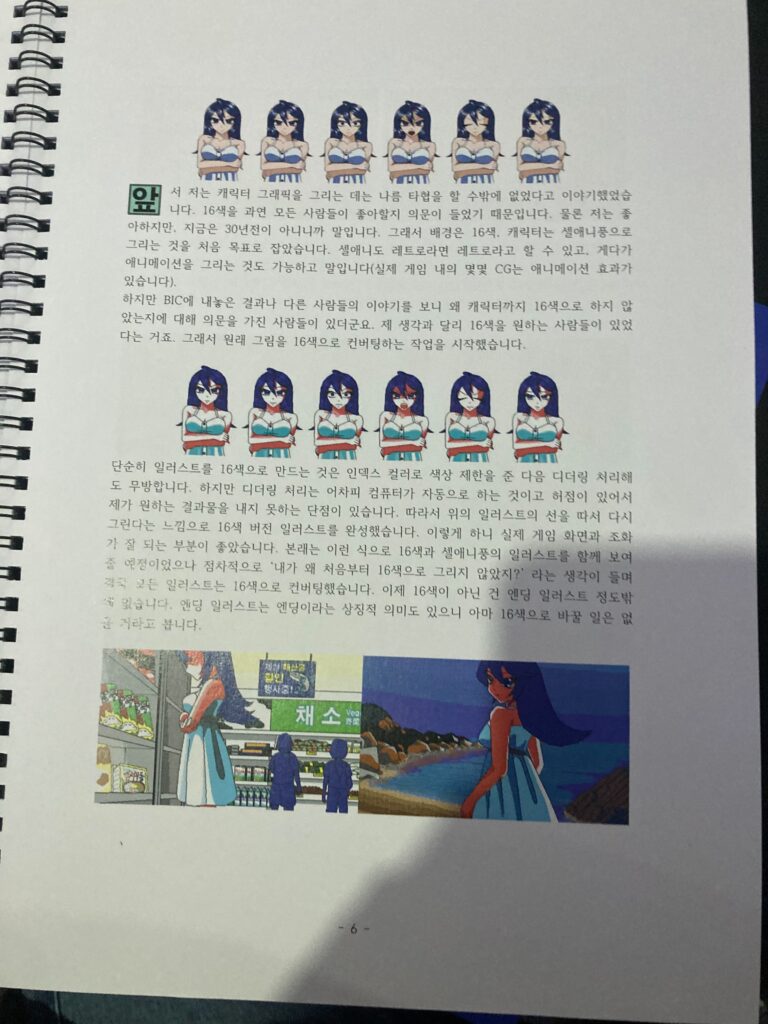
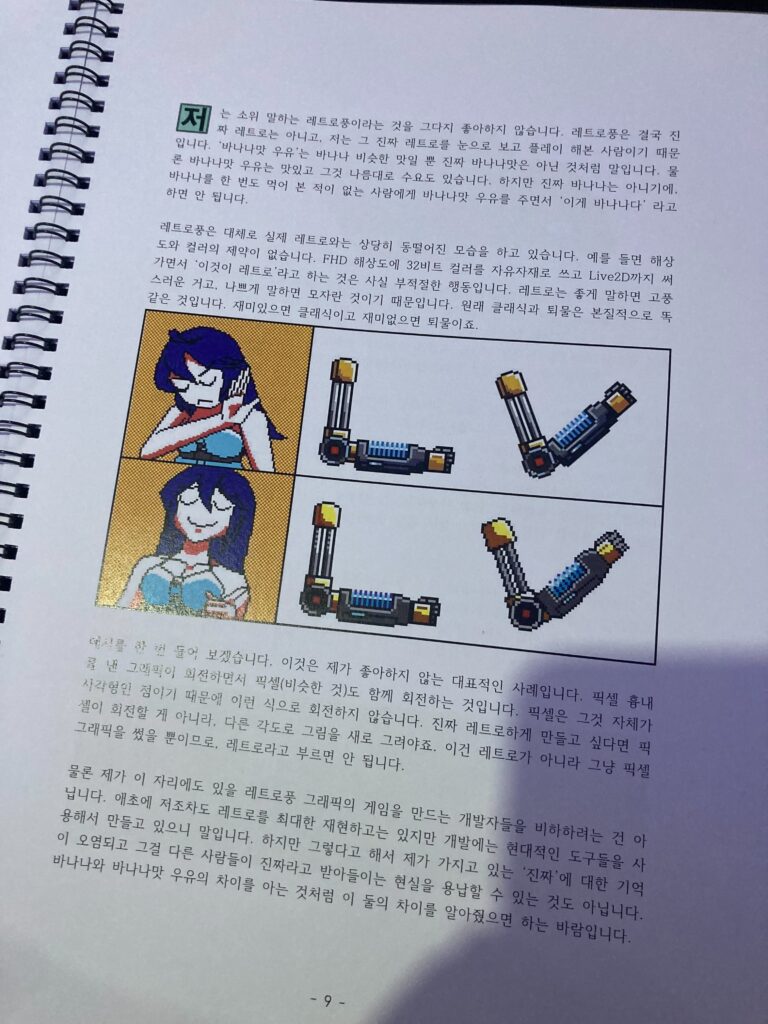
After playing, I had a brief conversation with the developer. During that time, a booklet placed at the booth particularly caught my attention. Prepared for reading during waiting times, this booklet detailed the developer’s thoughts on the game, their respect for classic masterpieces that influenced them, and what kind of game they wanted to create.
From the passionate writing, I could sense the developer’s strong will and passion for “creating the game they want to make above all else.”
Expectations for Localization
While the graphics and illustrations strongly reflect influences from Japanese subculture, the game’s content distinctly showcases Korean characteristics. The regionality and meme-like elements found in item descriptions convey a density of the developer’s “likes.”
It is planned to support Japanese and English, but I am very curious about how these cultural elements will be conveyed across language barriers. Given that this work is created with the indie game spirit of “making what you want without compromise,” I have high expectations for the official version.
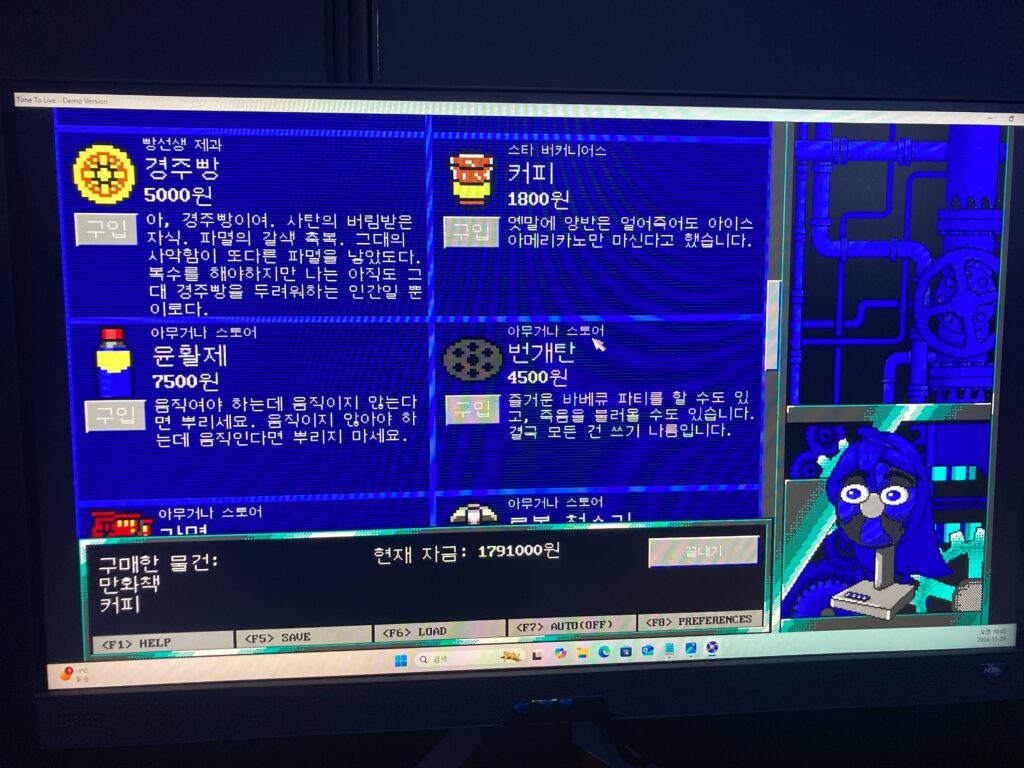
How will this be localized…
Cuteness Concealing High Difficulty—『ハロワンダーバンド』
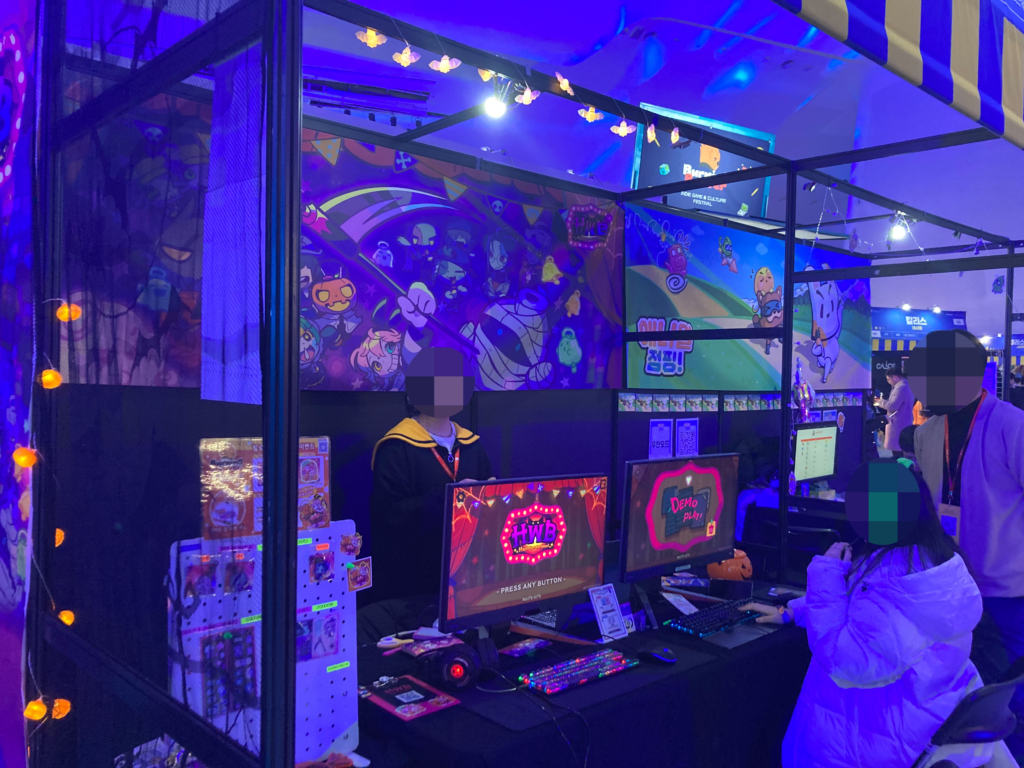
It has a strong Halloween concept.
Displayed at booth number 41, 『ハロワンダーバンド』 is a Halloween-themed rhythm game developed by a trio of developers known as “WhiteKite.” Currently in development with a target release in 2025, this work featured a new episode that was playable for the first time at this event.
An Unconventional Work Gaining Attention on Social Media
In fact, I had been paying attention to this work through social media for some time. Its uniquely cute design has garnered attention not only in South Korea but also in Japan, leading to the decision to include Japanese language support, which was not part of the original plan.
Incorporating storytelling into the basic rhythm game system, each episode features its own unique story, animation, and music. Additionally, spontaneous events called “TA-DA!! Events” occur, ensuring that players remain engaged throughout.
The keyboard-based control system is also distinctive, using the ASD keys for notes on the left side and the JKL keys for notes on the right side, setting it apart from traditional rhythm games.
Unexpectedly High Difficulty and Attractive Visuals
However, what surprised me when I actually played was the unexpectedly high difficulty. The animations playing in the background were so cute that I often found myself distracted, missing notes. I believe this was an intentional choice by the developers to pursue both the character’s charm and the fun of the rhythm game simultaneously.
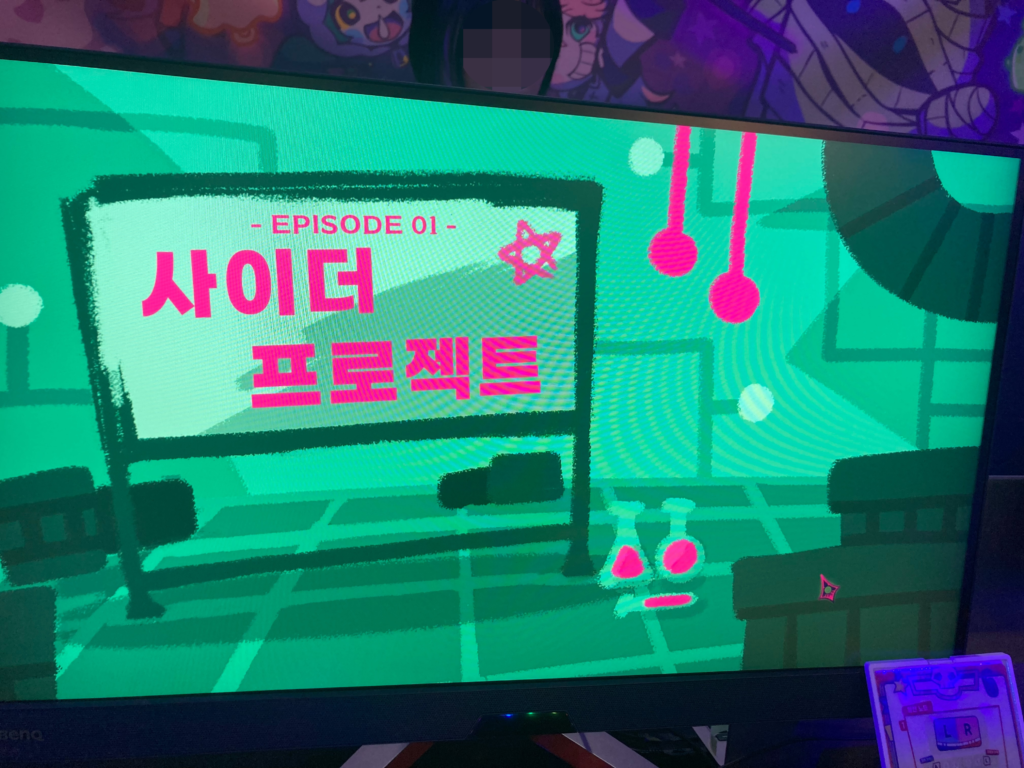
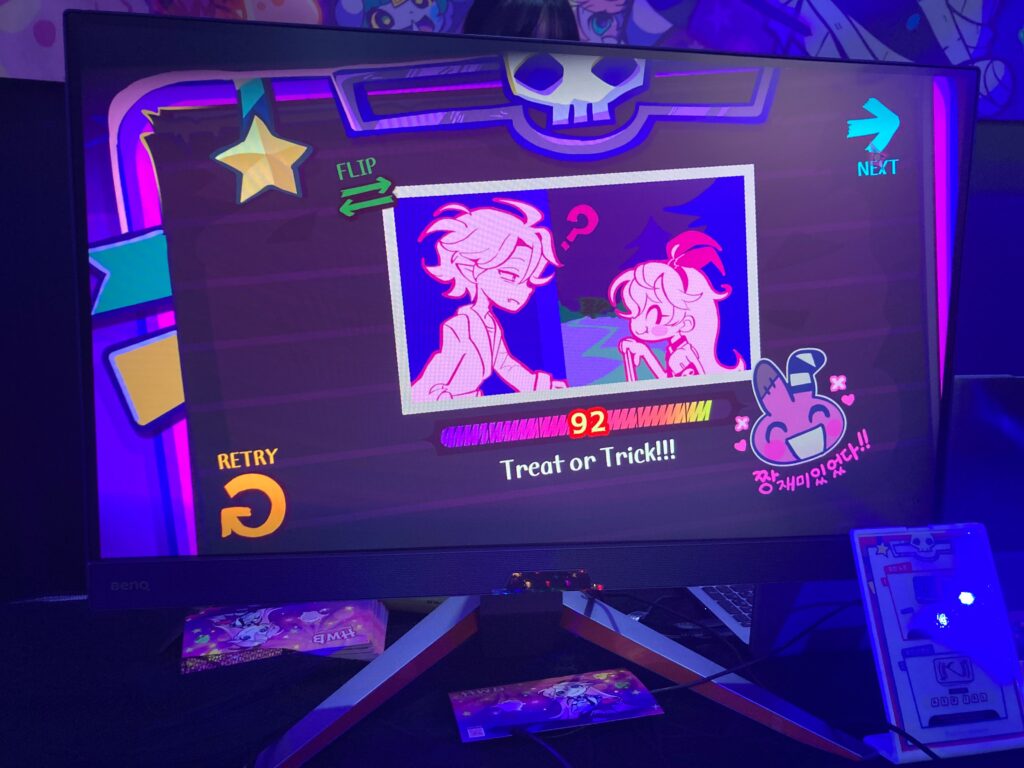
A Level of Completion Unthinkable for a First Exhibition
Surprisingly, this Burning Beaver event marked the first participation for the WhiteKite team in a game event. The level of completion in booth design, merchandise, and game design was impressive, making it hard to believe it was their first exhibition.
Despite having no prior experience in event exhibitions, the fact that they have garnered such attention both domestically and internationally is intriguing. The development team seems to be considering participating in various events, including those in Japan, in the future. Additionally, since this is a Halloween-themed work, they are aiming for a release during next year’s Halloween season.
Potential Beyond Cultural Boundaries
The charm of this work lies in its ability to appeal to a wide audience without being confined to a specific cultural sphere, thanks to its uniquely cute visuals. By adopting the universally popular theme of Halloween, it may showcase a new approach to rhythm games in the indie game scene. I hope to encounter this work at various events leading up to its release.
A Puzzle Adventure Reflecting Social Realities—『ソヒ』
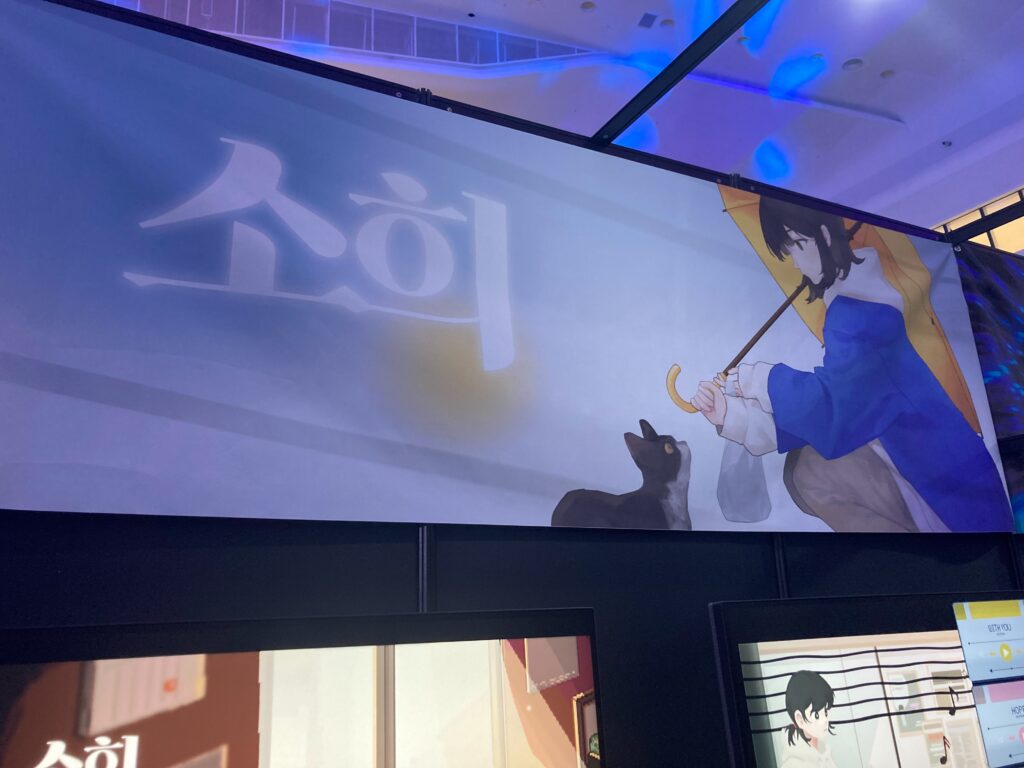
Encountered at booth number 31, 『ソヒ』 is a 2D pixel graphic puzzle adventure game developed by the team “Anemone.” A free demo version is available on STOVE, and the official release is just around the corner.
Heavy Themes Hidden Beneath a Warm Appearance
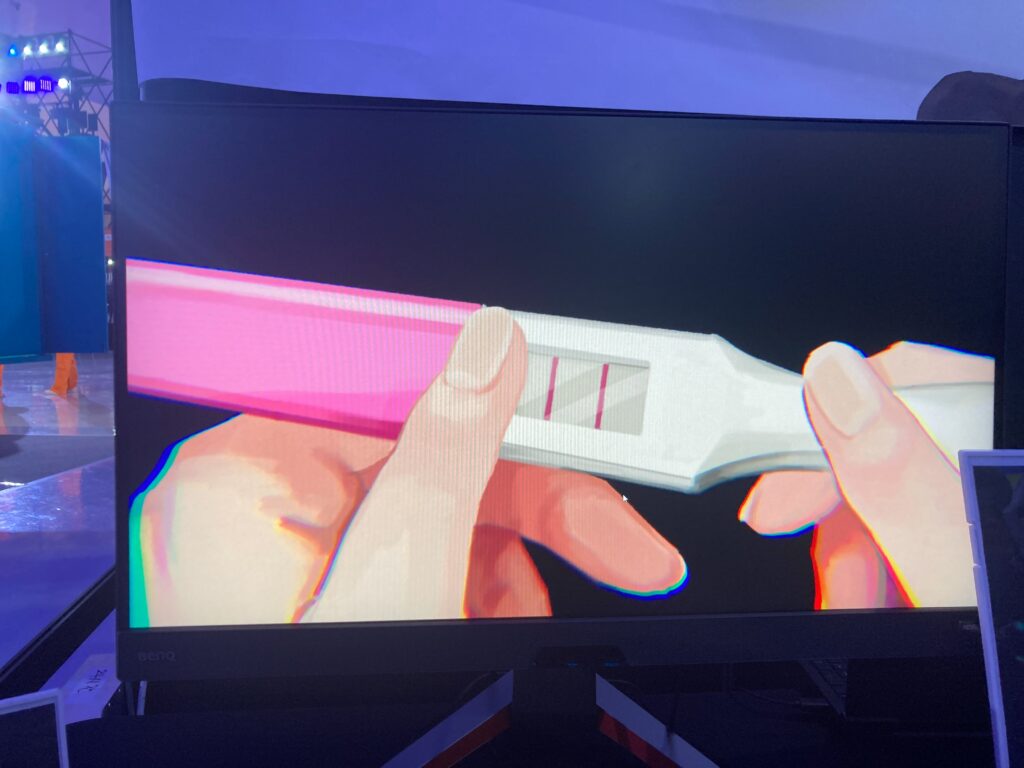
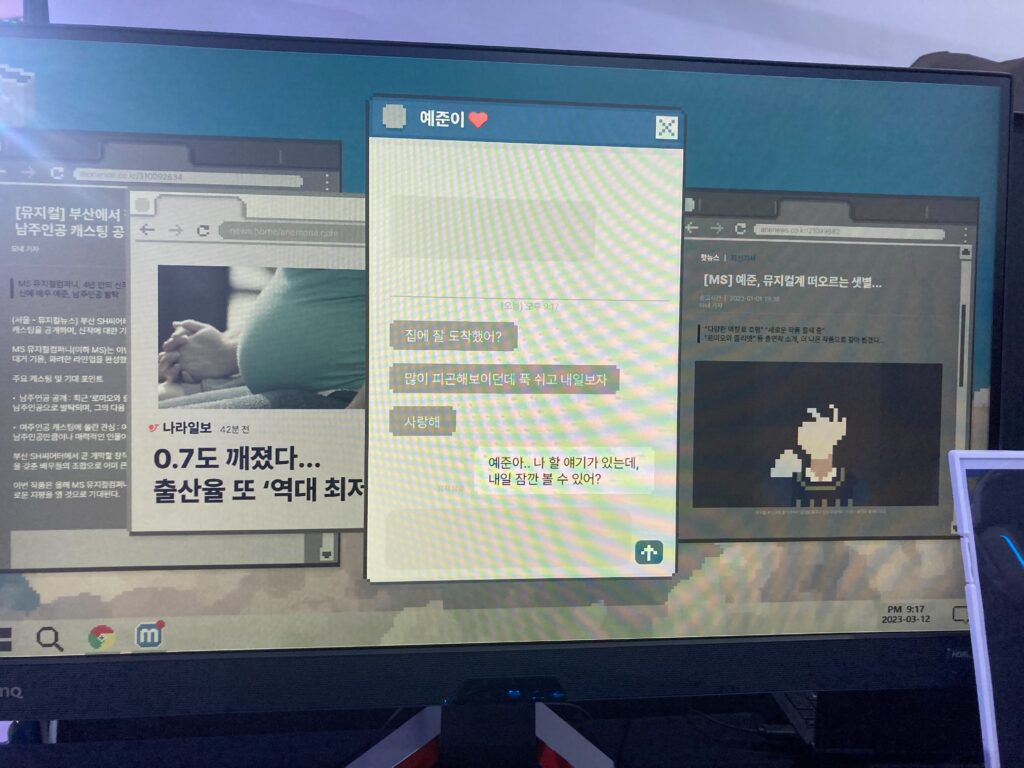
The story depicts the journey of the once-quiet girl Sohee as she faces unexpected pregnancy and unfortunate accidents, leading her to consider abortion. In stark contrast to the warm visuals, the game delicately addresses heavy themes such as teenage pregnancy, abortion, single-parent households, and suicide.
My main concern was how a game dealing with such heavy themes could provide an experience for players. However, 『ソヒ』 masterfully achieves a delicate balance between gameplay, themes, and storytelling.
The mini-games that appear throughout serve not only as elements of a puzzle adventure but also function as devices to express the protagonist’s feelings of anxiety, despair, and sadness. I believe this is an excellent attempt that reflects the developers’ sincere approach to “playing from Sohee’s perspective.”
Emotional Expressions Woven into Daily Life
After playing, what stood out in my conversation with the developers was their statement about pursuing gameplay by incorporating mini-games without compromising immersion. Scenes depicting Sohee attending university lectures while exhausted and preparing for auditions to become a musical actor express her anxiety and loneliness through mini-games that reflect everyday moments, showcasing meticulous planning.
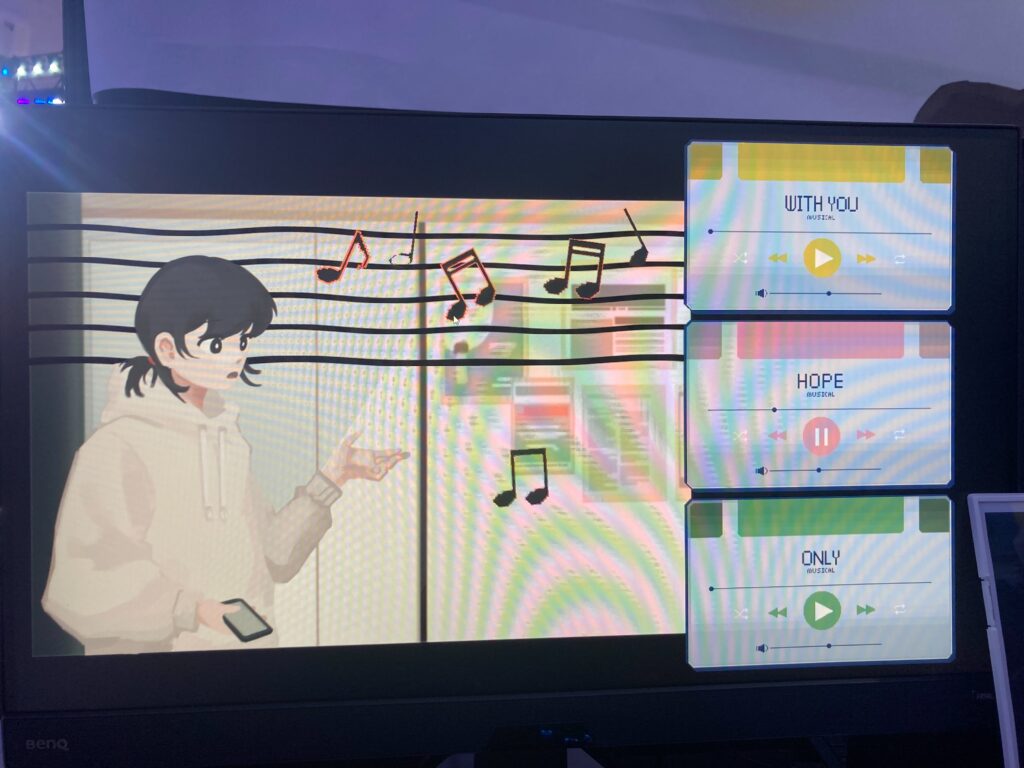
This scene marks her realization that her condition is different from usual.
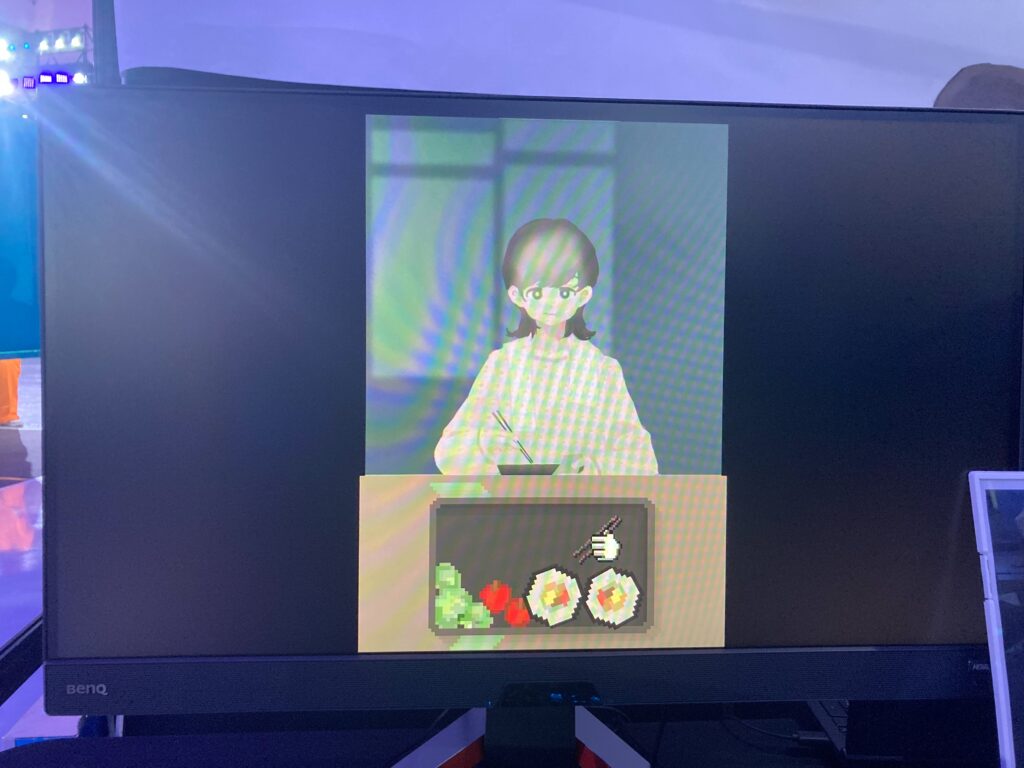
A Sincere Approach to Social Issues
What stands out about this work is its straightforward approach to social issues that are often considered taboo. Simultaneously, it appropriately depicts the landscape of Korean society within the constraints of portraying these issues as part of daily life. Particularly, the scene where young Sohee buys snacks at a stationery store in front of her school evokes a sense of nostalgia with its vivid depiction.
In the Korean indie game scene, there are relatively many works that tackle such social issues. The fact that this work won the Social Impact Award at BIC suggests that the direction of content sought by the Korean indie game scene, and by extension Korean society, may differ from that of Japan.
[blogcard url=”https://store.onstove.com/ko/games/3820″]Burning Beaver Report—This is the End of Part One
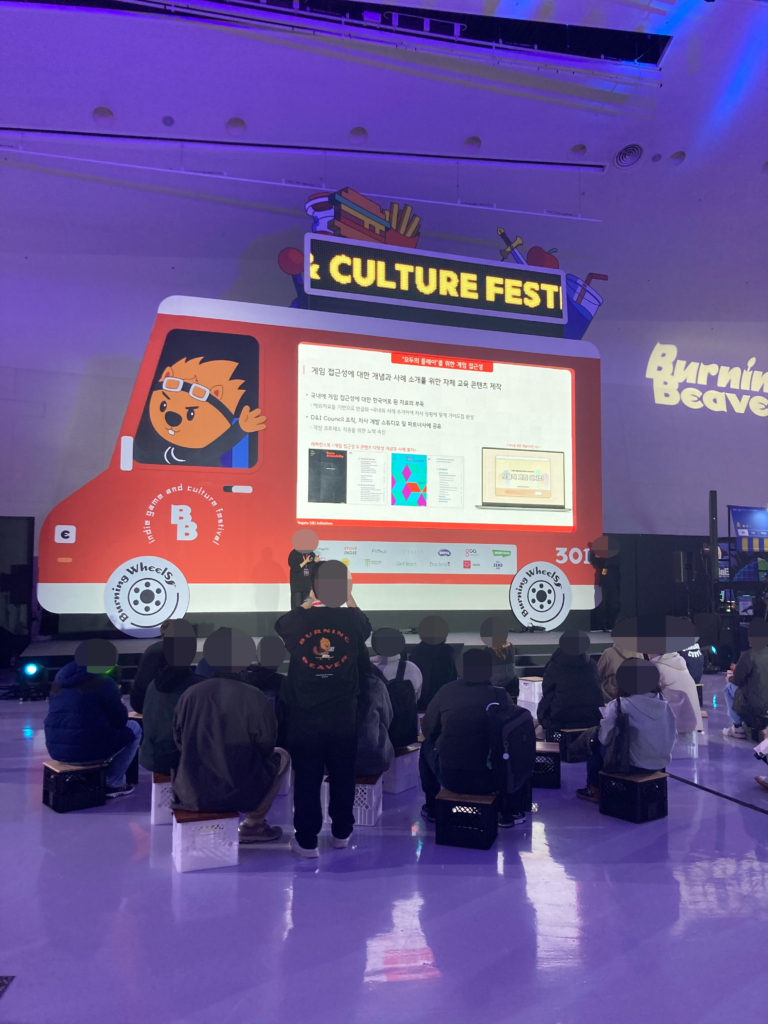
Reflecting on the three works introduced so far, the passion of the developers trying to convey their stories in their own ways warms my heart. From 『Time To Live』, which captures the creator’s enthusiasm through limited 16-color graphics, to 『ハロワンダーバンド』, which conceals intricate gameplay within its cute visuals, and 『ソヒ』, which calmly weaves heavy themes of modern society. Each work explores “expressions that can only be achieved through games” in different ways, allowing me to feel a new breath of life in the Korean indie game scene.
And the encounters with impressive works at this Burning Beaver event are far from over. In the next installment, I will share my experiences filled with surprises and discoveries, thinking, “Games can take this form too!” From new adventures born from limiting the sense of sight to unexpected uses of devices, there were numerous works at this event that made me exclaim while playing! Please look forward to meeting those games!
(To be continued in Part Two.)

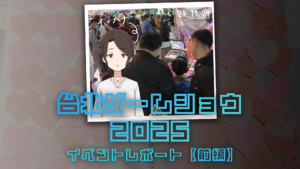


![“Unsolved Cases Must Come to an End – Interview with Solo Developer SOMI [Part 1]”](https://skoota.jp/media/wp-content/uploads/2025/01/SOMI_サムネ(日本語)-300x169.png)
![“Experimental ‘Play’ Encountered in Seoul – Burning Beaver 2024 Report [Part 2]”](https://skoota.jp/media/wp-content/uploads/2024/12/SKOOTA_BBレポハナサムネ_後編-300x169.png)
